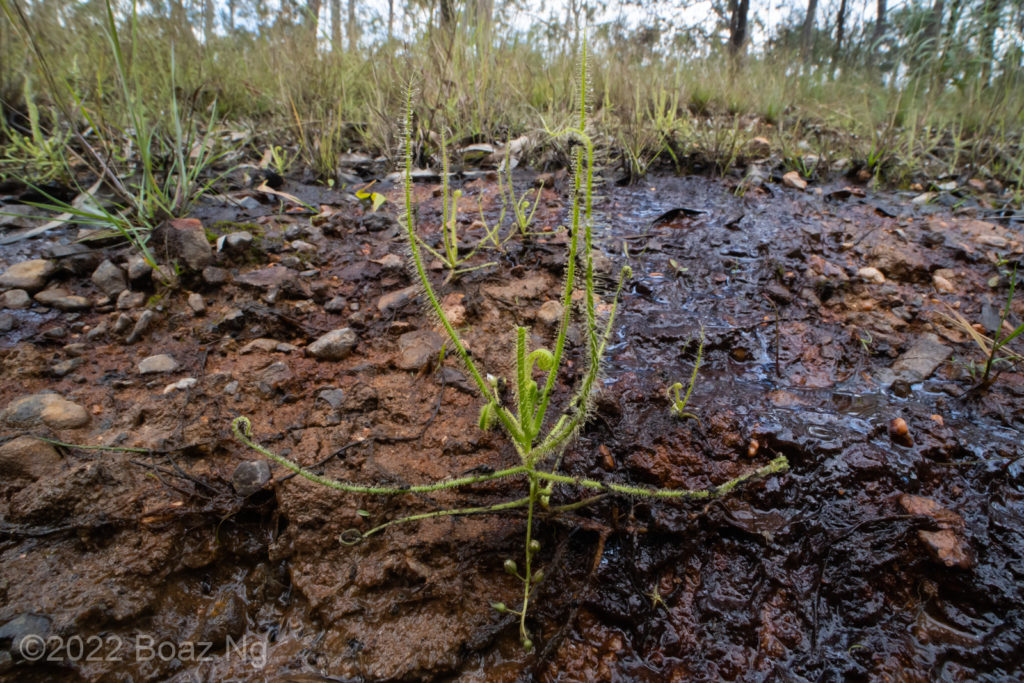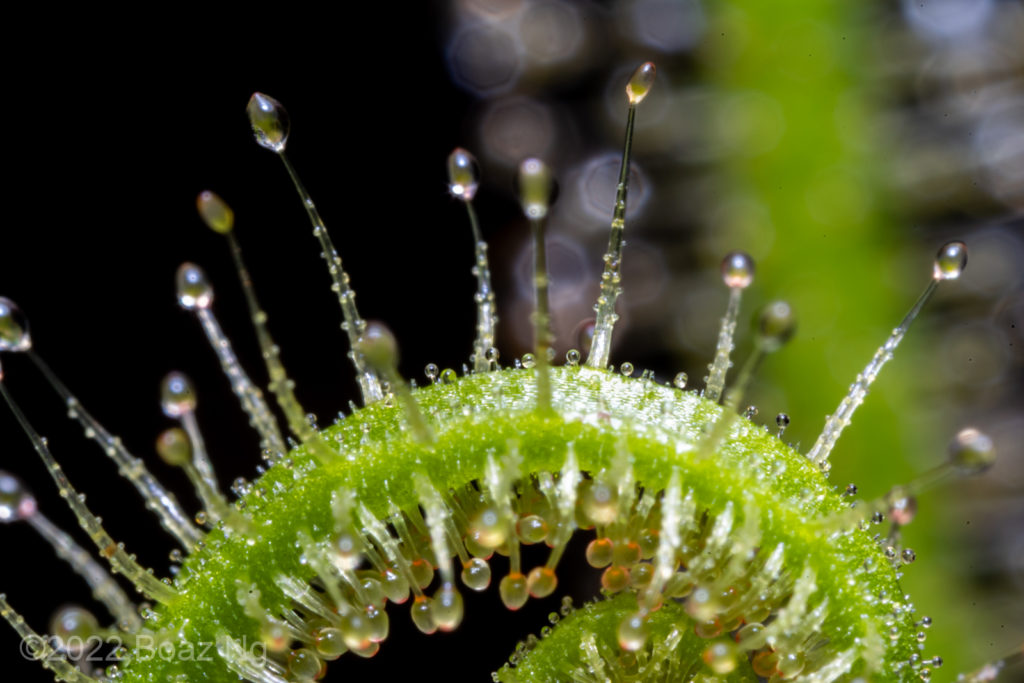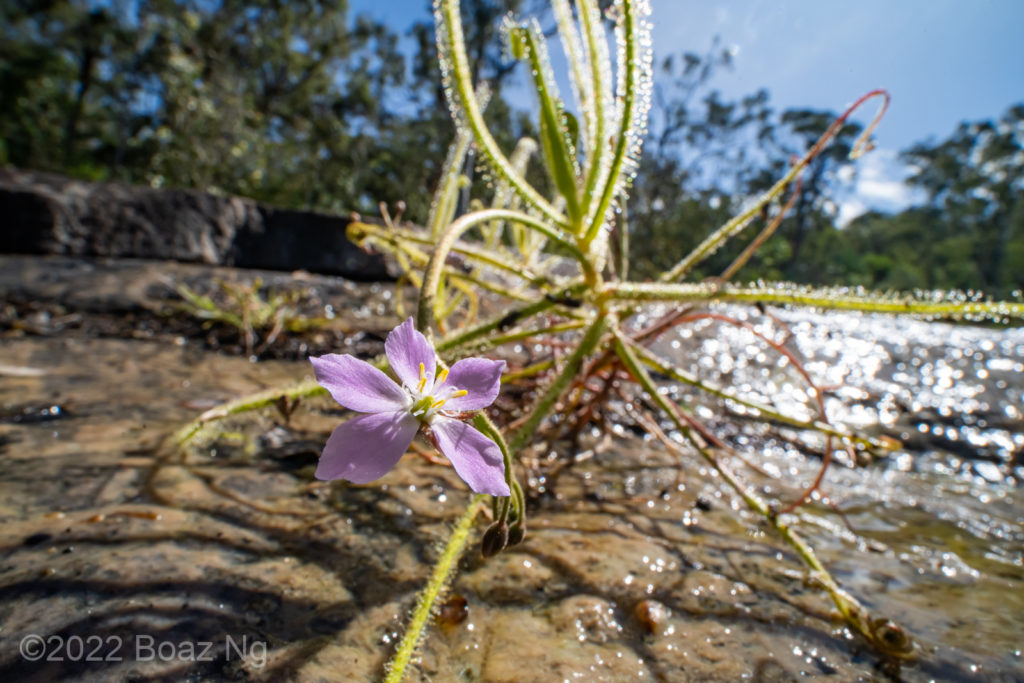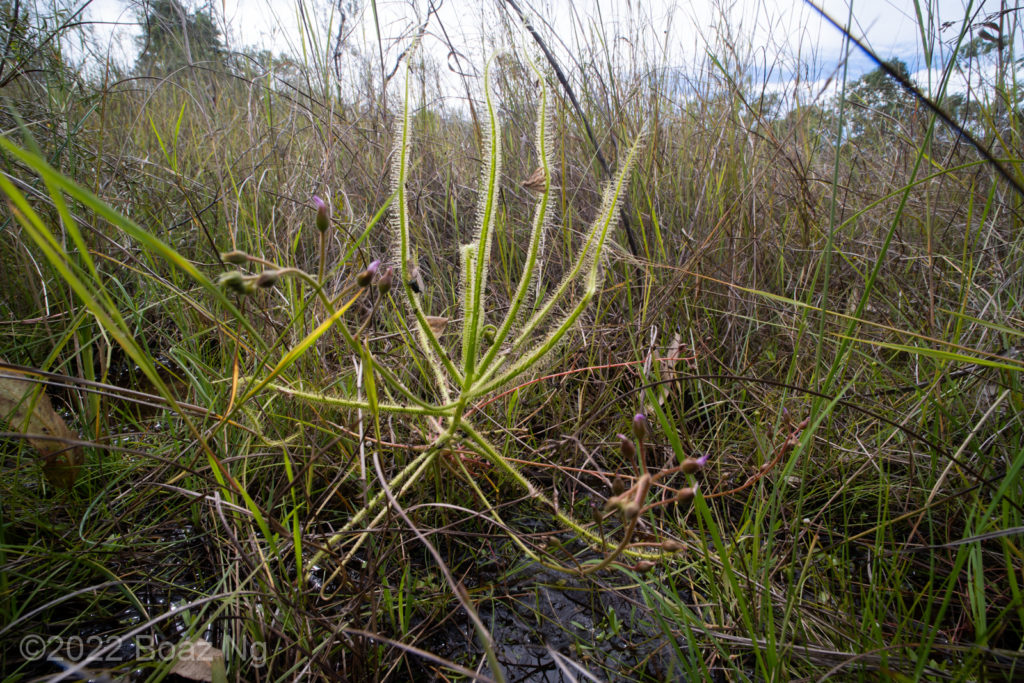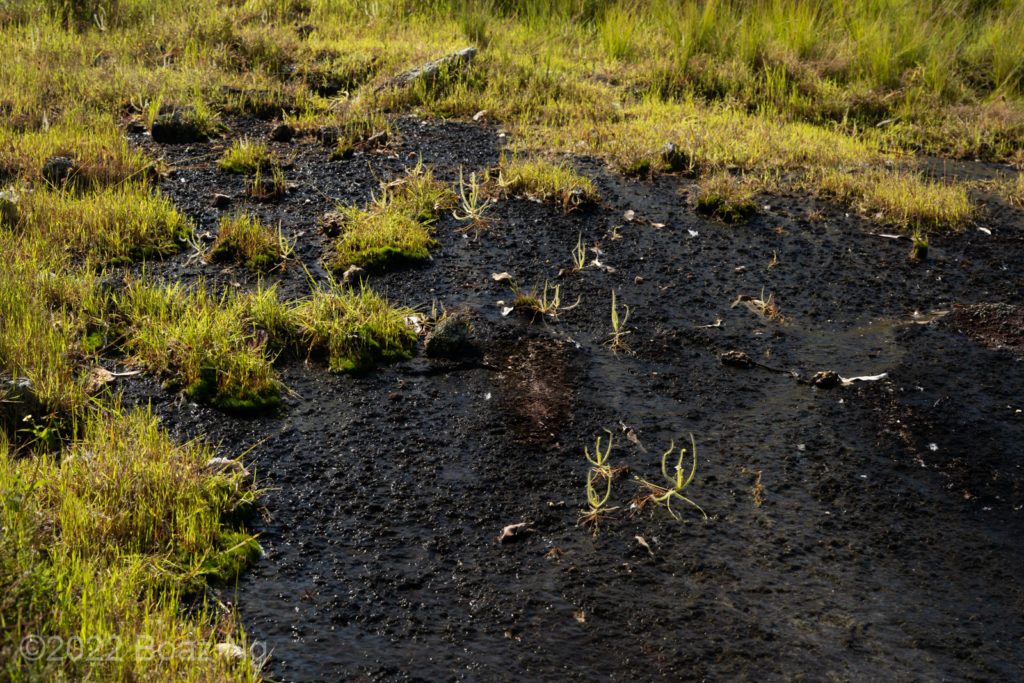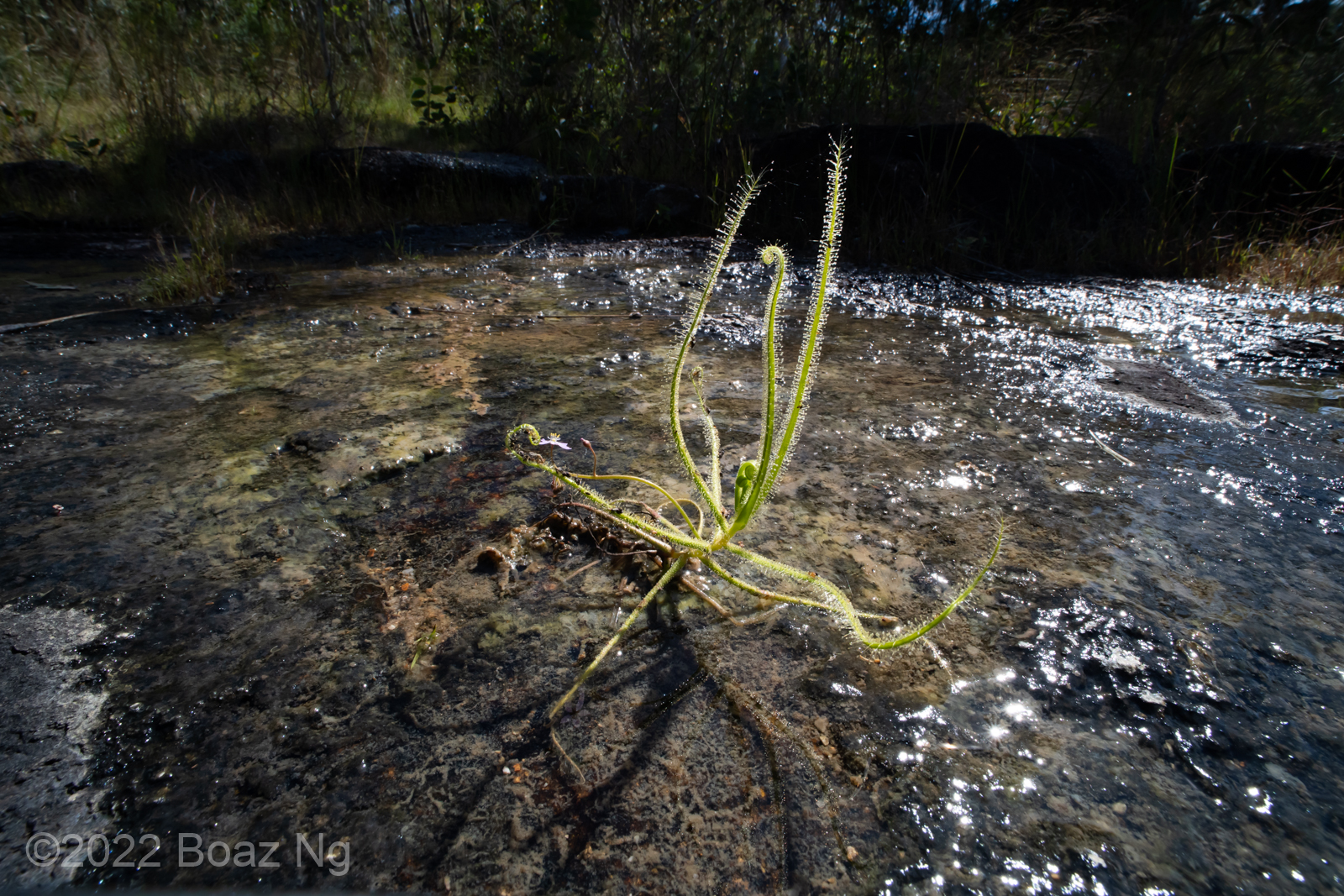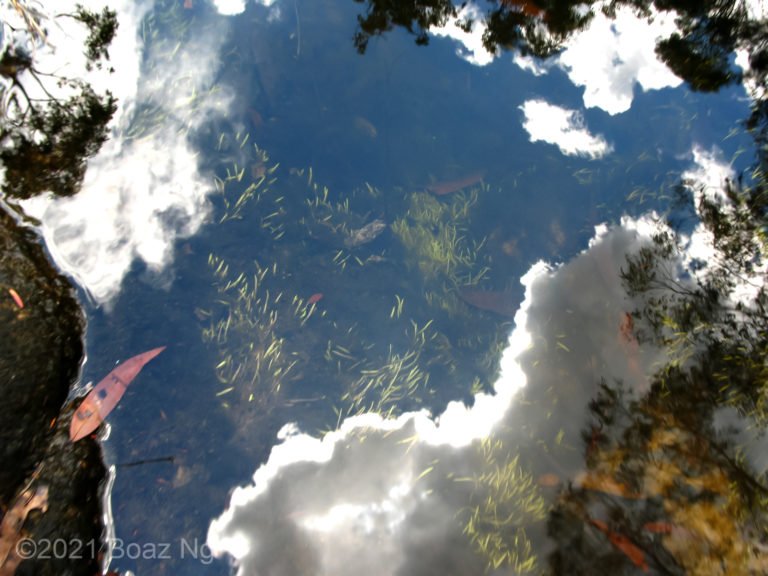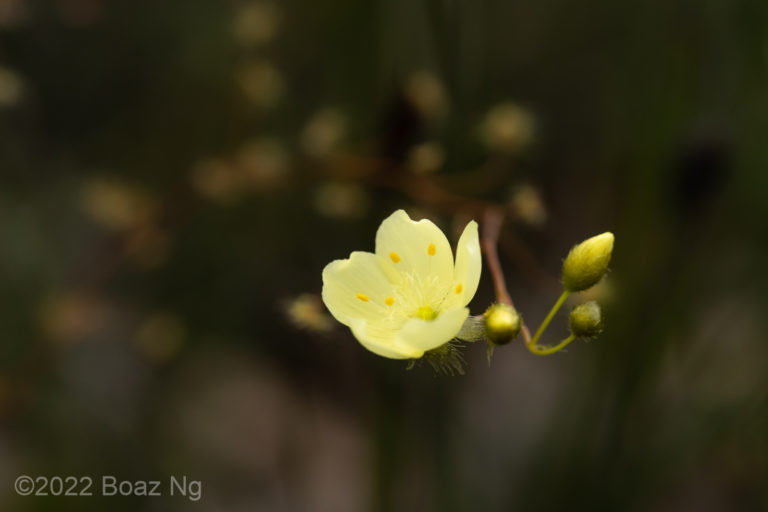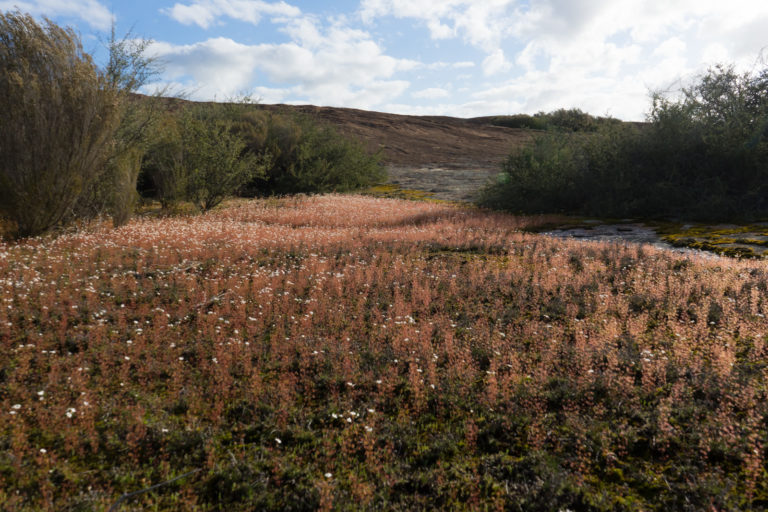Drosera finlaysoniana is a sundew in the section Arachnopus (indica complex) found across Australia and South East Asia. The species is named in honour of George Finlayson, a Scottish naturalist.
D. finlaysoniana is a medium to large sundew with long, thin leaves that resemble the sprawling arms of an octopus. The species does not have a petiole, with the tentacle-covered laminae extending to the stem. The underside of the leaves lacks the long prey-trapping tentacles. The entire plant is covered in small dew-producing glands on all surfaces of the plant – including on the tentacles. The flower stalk usually bends downwards horizontally as it develops. The flowers are white or pink.
In Australia, the species is typically found in the country’s interior, in arid or semi-arid regions of all mainland states. Such areas are often dry in summer (or the dry season in the monsoonal north) and wet during winter. The species grows seasonally moist substrates in forests, in seasonal soaks, in springs, on grassy creek lines and seepages atop rocks.
Within the indica complex, the species is identified through the lack of a petiole and gland-covered surface without any long indumenta. It is most similar to D. margaritacea, which has a long, upright flower stem and long yellow-tipped indumenta near the leaf axils (The flower stems of D. finlaysoniana tend to bend downwards and the indumenta are not long). It could also be confused with D. aquatica, which lacks a petiole but has long, whispy hairs on the stem which are absent in D. finlaysoniana.
